Ball Watch Co. has an interesting history that dates back to the late 1800’s. Following a train wreck in 1891, Webb C. Ball, then a prominent jeweler in Cleveland, Ohio, was appointed Chief Time Inspector of the railways. He implemented Standard Time for all railways (a relatively new concept) as well as rigorous checks and requirements for railway employees. For more info, check our brand highlight.
The current incarnation of the brand manufactures watches in Switzerland, using ETA/Selitta movements and a handful of technologies that set them apart. Their watches are all designed with the maxim “Accuracy Under Adverse Conditions” at their heart, which is noticeable in their testing for shock resistance and anti-magnetism. Perhaps their most well-known feature, however, is their use of tritium tubes for luminescence. While they are one of many that do, they are perhaps the most high-end, with the most varied designs.
The current entry point for a Ball watch teeters around $1500, which is more than a lot of what we discuss, but less than most of what’s out there, especially at retail. Conveniently, their entry-level watches are also their simplest, with designs geared towards versatility with a bend towards dress. We’ve spent some time with the Fireman Racer Classic, a 42mm dress/casual watch with a vintage look. This watch is power by the Ball RR1103 (more on that later), has a sapphire crystal, crocodile strap, tritium tubes and an MSRP of $1,699. There’s a lot to like about the Racer Classic, though it has a fairly high price tag. Question is, is it worth it?
Ball Fireman Racer Classic Review
 Case: Steel
Case: Steel
Movement: Ball RR1103 (ETA 2824-2/Selitta SW200)
Dial: Grey
Lume: Tritium Tubes
Lens: Sapphire
Strap: Crocodile
Water Res.: 100M
Dimensions: 42 x 51mm
Thickness: 11.5 mm
Lug Width: 21 mm
Crown: 7 x 5 mm
Warranty: 2 years
Price: $1,699
Case
The Fireman Race Classic has a decidedly elaborate case that evokes early 20th century design. Measuring 42 x 51 x 11.5mm the stainless steel body has a robust size that is meant to make it more of daily wear with some sporty intentions, despite its dressier appearance. The central case features several stacked rings, each with their own look. The bezel is a typical angled ring, but beneath that is a convex ring. This creates interestingly distorted reflections that add to the visual complexity of the design. Between this area and the mid case in then a channel that is stepped in.
The lugs come off of the mid-case, which is relatively thin, with a slight lip. This creates the look of welded lugs, which plays to the history of the brand. The geometry and finishing on the lugs is worth special attention. They have very sharp lines, creating a broad and masculine frame for the case. They are brushed on top and feature polished bevels on their outer and bottom edges. From the side, the lugs appear to flair almost like a tear drop, which is then cutaway on its bottom out and outer edge to create a strong and architectural form.
The screw-down crown at 3 is surprisingly large, perhaps alluding to the pocket watch origins of the brand. Measuring 7 x 5mm, the crown is both wide and tall, with deep grooves and an elegant “RR” logo on its end. At first, I found the size of the crown to be jarring, as did people I showed the watch to. But, as I wore the watch more, i got used to it and began to like it as an idiosyncrasy of the design. Like the big-crown Submariners of the 50’s, there is something rugged and appealing about such a tall crown without crown guards. Since it’s screw down, it also is very solid, which adds to the build of the watch.
The case back of the Racer Classic is screw down with a deeply etched inner area. In the very center is a cool, stylized illustration of a train with exaggerated perspective. Around it is text reading “Ball Watch Co.” “Swiss Made” and “Shock Resistant”. I love good case back art as, while totally without function, adds to the feeling of the watch as an artistic artifact, as well as functional time piece. If there is no display window, then at least some effort is appreciated. The depth and style of art present here is better than most.
Dial
The Racer Classic has a simple and masculine dial that evokes mid-century watch design, but with the modern twist of tritium tubes. The surface is a dark, ash grey with a hint of brown for warmth. It also has a slight sunburst and pie-pan shape, for depth and dynamic reflections. The color is very appealing as is the finish. It’s mute, dark and handsome for a more toned-down aesthetic than the case has. This tempers the look of the whole watch, making it more restrained and sophisticated.
The primary index consists of shark tooth shaped applied steel markers, each with an embedded tritium tube. The markers are polished steel, and angled on both sides, adding bright reflections on the dark surface. The geometry definitely speaks to 20th century design, adding some vintage appeal. On the outer edge of the dial is a low-lying surface with circular graining and white markers for minutes/seconds. This adds a bit of legibility and is well-executed (the graining in particular is a nice touch), but perhaps feels a bit extraneous, like it was added to increase the dial to meet a larger case size.
At 4.5 is an angled window that shows a black on white date. This is perhaps the only detail on the watch that bothered me. While I was able to get used to it, and do genuinely think the positive qualities of this watch greatly outweigh this issue, that window is a bit of an eye-sore. The angle feels weird, the proximity to the center of the dial is off and the black on white is obtrusive. I think the watch would have been fine without a date, and if totally necessary, the classic 3 o’clock position, even if it meant the marker there had to be cut or altered, would have flowed better. Also, white on black would have been easier on the eyes, but white on silver or matching grey would have been ideal.
The Racer Classic is fitted with dauphine style hands for the hours and minutes. Both are polished steel and feature long tritium gas tubes. The seconds hand is a thin steel stick with a tritium tube in a rectangle about halfway up the stem and a counter weight that is a highly detailed “RR” logo. The hands match the style of the watch perfectly, reflecting the design of the shark tooth markers. The attention to detail on the seconds hand also stands out.
Lume
As mentioned before, one of the unique aspects of the Ball watch brand is their usage of tritium gas tubes, or in their language “Self-Powered Micro Gas Lights”, which admittedly has a nice ring to it. Essentially, the tubes have tritium gas inside which is radioactive, emitting electrons which react with a phosphor layer that coats the inside of the tube. The result is a constant emission of light. One does not need to charge them via sunlight or other external source as they are powered from within.
Compared to Super Luminova, which is what we more commonly see on watches we review, the glow is fairly mute. They don’t get that very hot charge one typically sees after holding a flashlight over a dial. Instead, they have a constant and even glow. At first, I was a bit put off by how dim it was. But, once in a dark space, such as a move theatre or bar…even sitting on your bedside table, the advantage becomes apparent. With your eyes adjusted, they are more than bright enough to be very readable, and since it’s a consistent glow, they don’t fade. I very quickly found myself wanting to wear the Racer Classic over other watches at night, and probably looked at the watch more than the screen during some disappointing holiday films; consider me converted.
The Racer Classic features 15 T-25 tubes, one per marker and one per hand. Hours 1 – 11 all glow green, while 12 and the hands glow orange. The use of color is great, as it gives you immediate orientation of the watch, leading to a faster read. Since this watch has a generally formal design, they kept the tubes fairly small as to not disrupt the look (compare to their divers and you’ll see what I mean), but they are still very affective. Unfortunately, they are difficult to photograph, so excuse the less than thrilling lume shot.
Movement
The Racer Classic is powered by the Ball RR1103, which is a rebranded ETA 2824-2/Selitta SW200 (I say both as their details indicate varying jewel numbers). As such, these are automatics with 25/26 jewels, hand winding, hacking, date and a frequency of 28,800 BPH. Ball puts and emphasis on their shock resistance, though no special mechanisms or safeties are in play to create higher than average shock resistance in the RR1103. The 5,000g resistance appears to mean they are ISO 1413 certified, or similarly tested. Other, more expensive, models feature a proprietary design called the “Spring lock” which essentially protects the balance from shock, increasing the resistance to 7,500g.
While a reliable, staple movement, a lightly rebranded ETA 2824-2/Selitta SW200 is a bit lackluster at the $1,699 asking price for this watch. Granted, there aren’t many other movements out there for them to use (and other watches that cost more still use them), but more decoration, regulation, etc… would add to the value.
Straps and Wearability
The Racer Classic is available with either a bracelet or brown crocodile strap. We went with the strap option for review as it is more our style, but since this watch features 21mm lugs, the bracelet might be the wiser choice in the long run. It’s easier to get a 21mm strap than a matching 21mm bracelet. That said, the crocodile strap is beautiful and very well made. It’s a dark, tobacco brown that seems to be a touch faded or grey. This makes it reinforce the warmth in the grey of the dial and stick to the reserved and handsome look all around.
The strap itself has a nice stiffness and is padded by the lugs while thin elsewhere. The buckle Ball used has a very cool design to it that appears to be unique to the brand. It essentially looks like a roller buckle, with large screw details on either side. “Ball” is the deeply engraved into the top. Though the roller itself is not real, the look feels very appropriate for the brand and the watch.
On the wrist, the Racer Classic wears very well. It’s a sizable watch, at 42 x 51mm, so it feels more like a sport watch than a dress watch, but the look speaks to the latter. It’s kind of like if someone in 1950 wanted to make an oversized (neigh, giant) sport watch, this is what it might have looked like. So, it’s best to think of it as a casual, daily wear watch with vintage undertones. And as that, it’s great. It’s very masculine and easy to wear.
The dark, smokey coloring is very pleasing and goes easily with most attire. It’s definitely a watch you can wear to the office, the bar or just out and about (I even wore to a ballet! How’s that for cultured!). The fact that it also has a 100m water resistance means you don’t have to run and hide if water is near you, and the tritium tubes will make it very visible when the lights go out. All in all, it’s a pleasure to wear.
Conclusion
With the Fireman Racer Classic, Ball has created a very enjoyable daily-wear watch with some exceptional features. The case is a work of art and needs to be seen in person to be truly admired. The subtle shifts of geometry and layered design create something sophisticated, yet industrial. Likely the design takes inspirations from 19th and 20th century trains themselves, which had a similar, romantic appeal. The dial is simple and refined, with that elusive “dark and mysterious” quality. It has a poise that belongs to a different century, yet feels at home with modern attire.
And, the tritium tubes are a cool and unexpected (well, not from Ball) touch on a watch this style. They really add functionality in the dark, making the Racer Classic a companion for all hours. The down side of this watch is really the price (and the unfortunate date window). $1,699 just feels a bit steep for this watch, though build quality and finishing are top notch. Clearly a result of the Swiss Made stamp, retail availability, marketing and simple brand positioning, but the movement is bit a generic, and while I love the tritium tubes, they are available on watches that cost far, far less. So, it’s a bit of a push-pull. I loved wearing it, I know if I, or perhaps you, owned it, you’d enjoy it immensely and wear it often. At the end of the day, that might justify the price after all. That said, we’d love to see an entry level Ball at around $1,000, though there are no signs indicating such a thing will exist.
review unit supplied by Ball Watch Co.
By Zach Weiss









 Featured Videos
Featured Videos





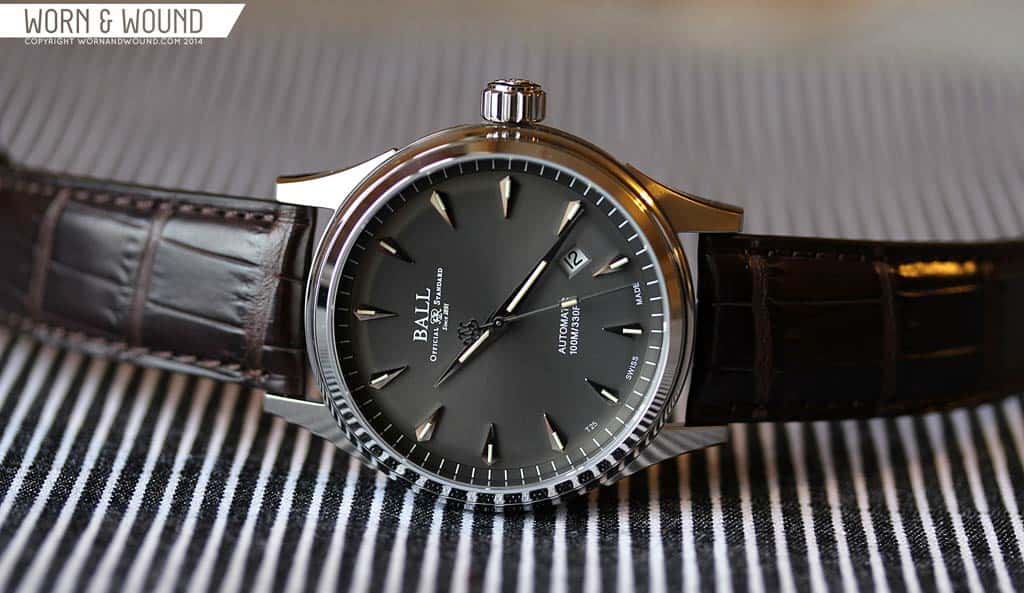
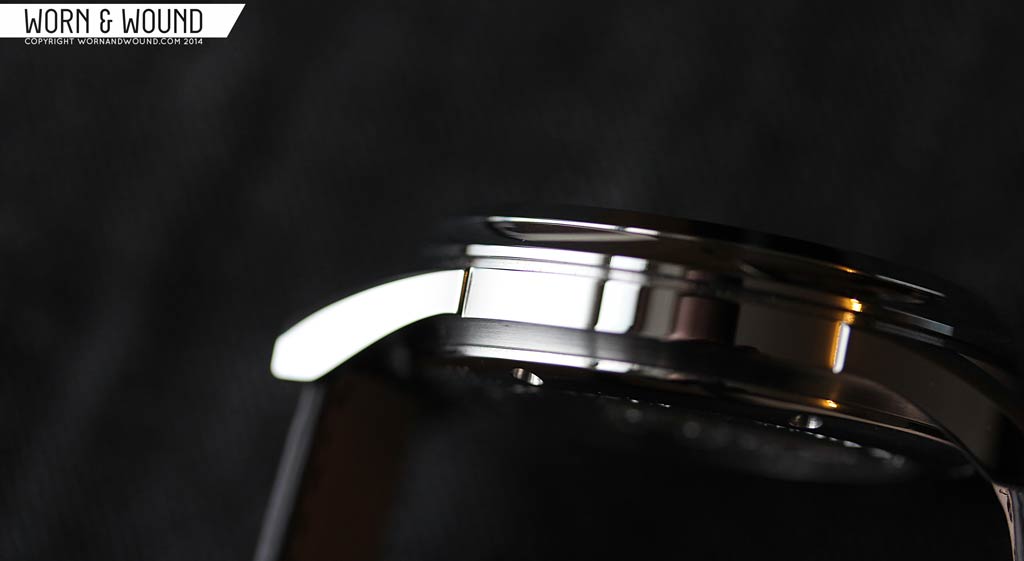

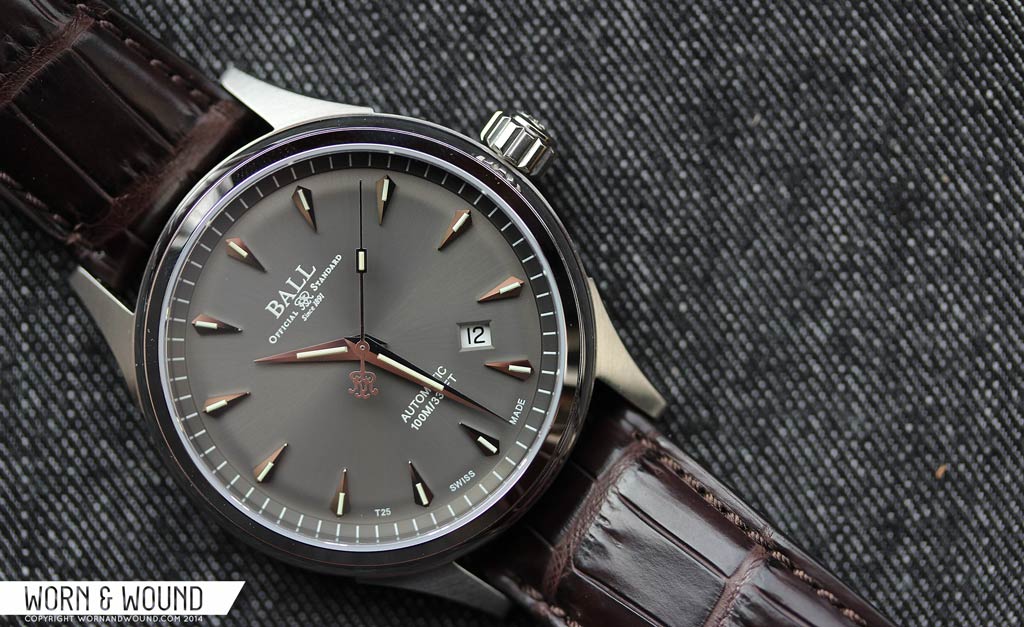
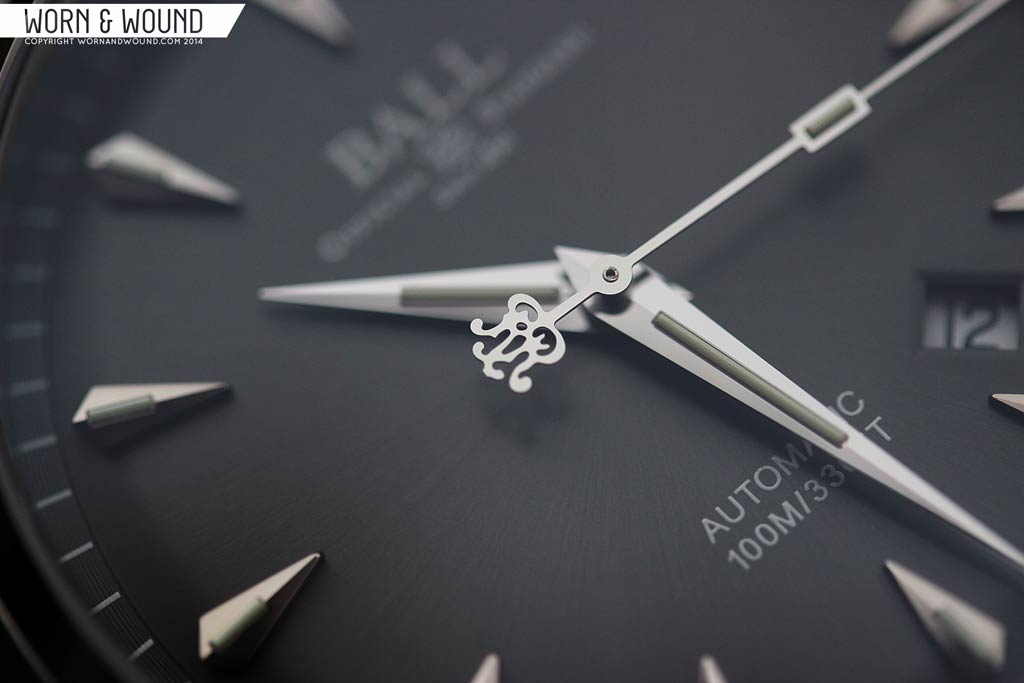
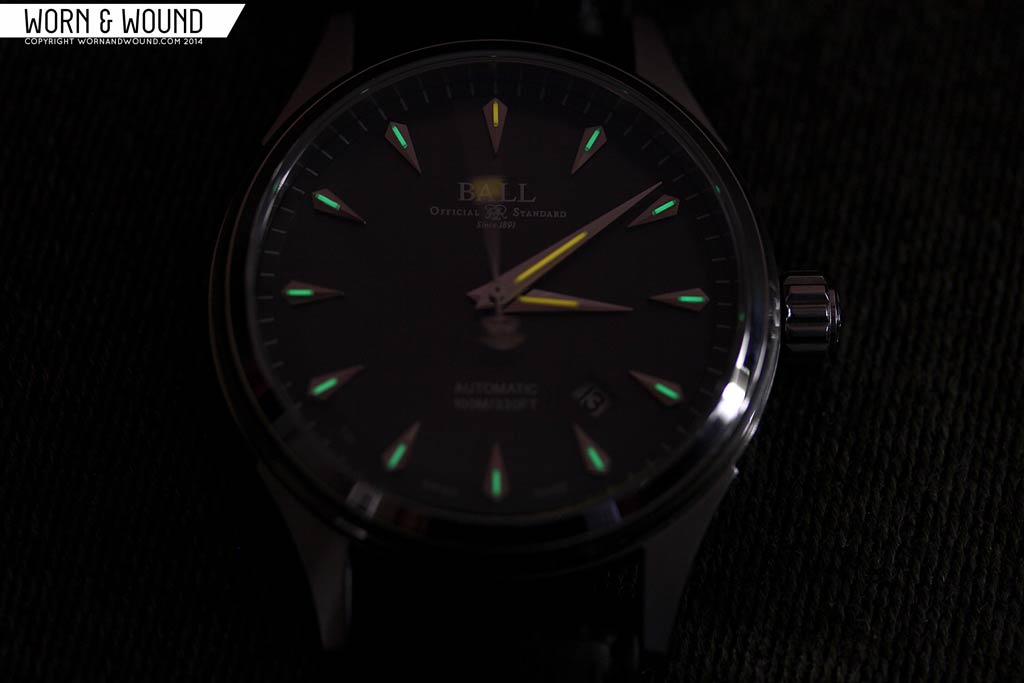
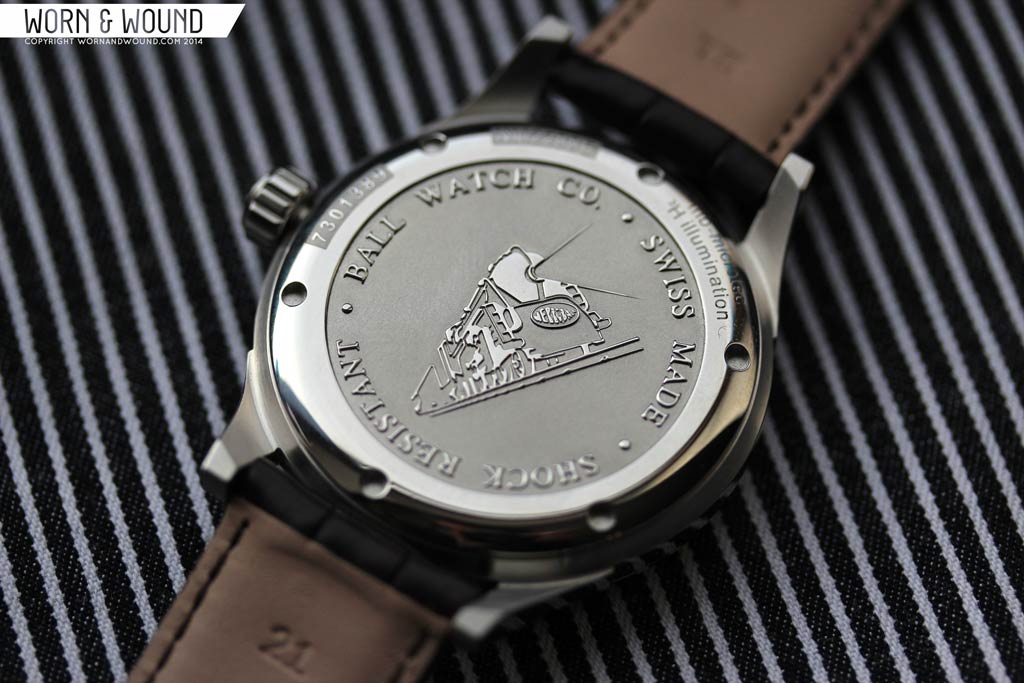
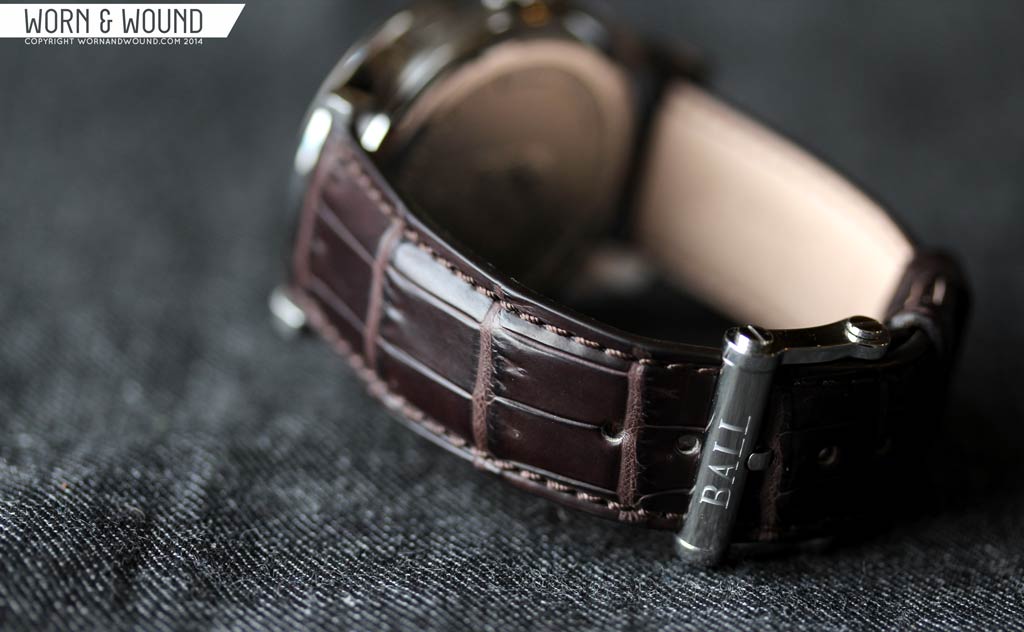
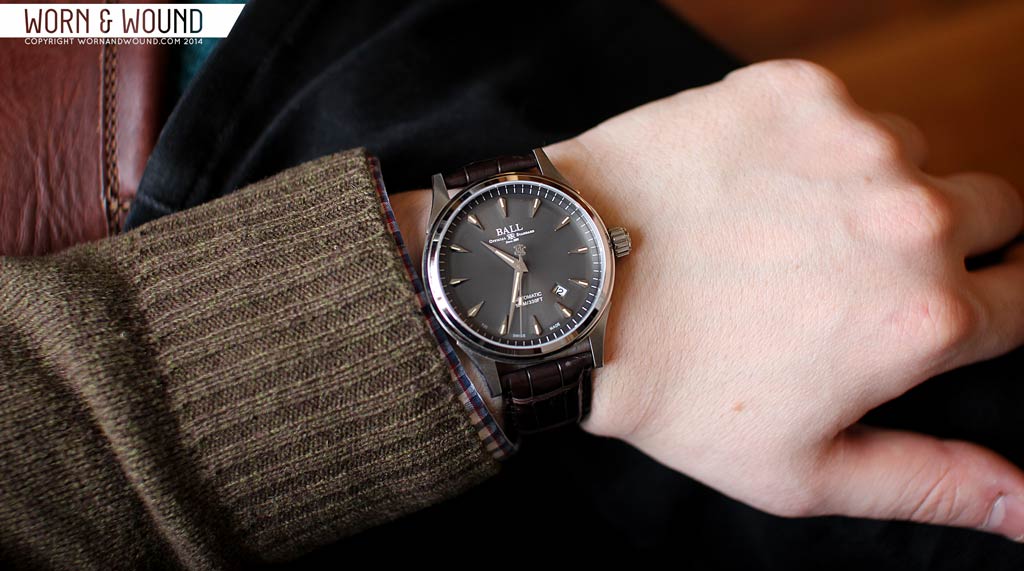
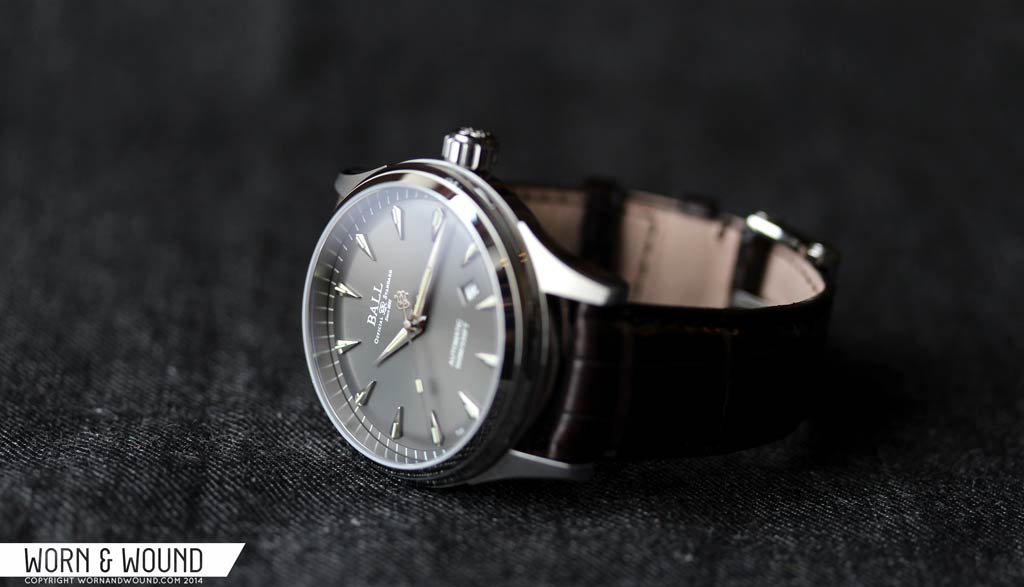
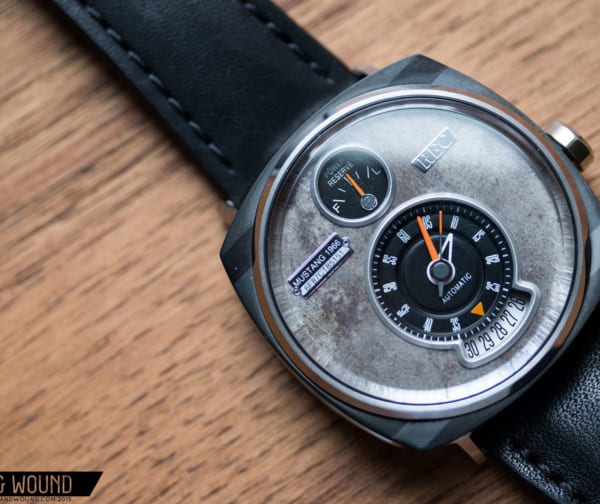
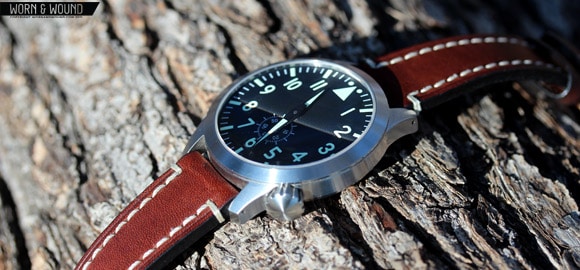

While I have not been lucky enough to wear this watch, I do own a Fireman 43mm. It’s been my weekend/work watch since 2009. I can attest to the tank-like construction and durability of Ball. That said, I agree with the comment on pricing. I got my Fireman for less than $800 NIB from an authorized dealer; at that price it is a steal, much higher and the value is lost.
Gorgeous dial!
Great looking piece – except for the “unfortunate date window.” Great review, Zach.
Classy looking.
Interesting history, is this how the phrase “On the Ball” was coined?
Great review and excellent points.
I agree with the sentiment about the date window. It doesn’t jive with the attention to detail Ball pays to the rest of the watch. If a microbrand like Halios can swing a matching color date wheel on a $700 watch, Ball should certainly be willing to make the same effort on a watch that costs more than double. But even with a matching date wheel, I think the date window would still be out of place at 4:30.
First the Orient Curator, now this one, I’m really finding myself drawn to the grey dial look right now.
Happy to see a more established brand on W&W. I like some of these micro-brands, but Ball represents an established company that is relatively permanent.
Who knows how long some of these micro-brands will be on the market — something to consider when buying a timepiece.
I picked this up yesterday and I really like it a lot. Well built and finished nicely. I will rotate this with a planet ocean. Really happy with the look and price for the quality level. MSRP is high, but who pays that??